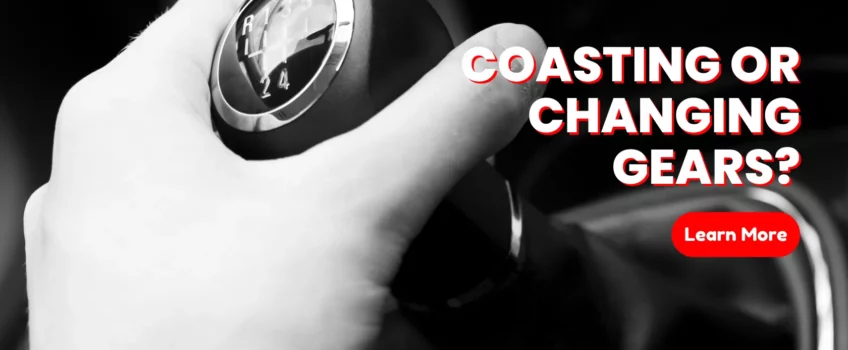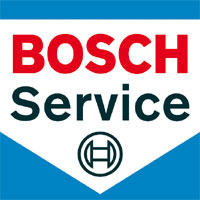
What Is Best For Fuel Saving? Coasting or Changing Gears?
There are plenty of tips and tricks on saving fuel that circulates among drivers. However, are these measures effective, or are they just motoring myths? The most frequent of these discussions centre around two key driving habits: coasting and changing gears. So, what’s the score — does coasting or changing gears save more fuel? Let’s take a closer look this this intriguing question.
Understanding the Mechanics: Coasting
Coasting involves allowing your vehicle to move along using its existing momentum, typically when going downhill or approaching a stop. The idea is that by disengaging the engine — that is, taking your foot off the accelerator and shifting to neutral — you’ll reduce the amount of fuel your car consumes.
However, most modern cars have advanced fuel injection systems that cut fuel supply when you lift your foot off the accelerator while the car is in gear. When you’re coasting in neutral, the engine has to use a small amount of fuel to keep running. So, in reality, coasting doesn’t help in saving fuel and can compromise your control over the vehicle.
What Is The Most Fuel Efficient Way To Change Gears?
How you use your gears can have a significant effect on your car’s fuel efficiency. In general, the higher the gear, the lower the engine speed, which can lead to fuel savings. For instance, driving at 60mph in third gear will use up to 25% more fuel than in fifth gear. So, it’s better to move up to a higher gear as soon as it’s safe and practical.
At the same time, you should avoid lugging or over-revving your engine. This means not driving too hard in a higher gear (such as second gear) at low speeds. Otherwise, you might find yourself burning up fuel unnecessarily!
By understanding the effects of coasting and changing gears, it’s clear that shifting up to a higher gear is more fuel-efficient than coasting. Although switching off your engine while at a standstill or driving slowly can give you some fuel savings, these won’t be large enough to make a real difference.
Simple Your Fuel Saving Tips and Tricks
To truly enhance your vehicle’s fuel economy, it’s important to adopt a smooth driving style and select the right gear for your speed. By making efficient use of gears — that is, not driving in too low a gear at higher speeds — you’ll reduce fuel consumption and ultimately save money.
Don’t forget to keep an eye on other factors that can affect fuel efficiency, such as tyre pressure, engine oil level, and air filter condition. Paying attention to these elements can help you optimise your car’s performance and get the most out of every tankful. While understanding the impact of coasting and changing gears is important, there are additional fuel-saving techniques worth noting:
- Regular Maintenance: By keeping your car in good health with regular servicing, you can ensure it runs more efficiently. This includes oil changes, tyre maintenance, and replacing worn-out parts.
- Optimising Tyre Pressure: Under-inflated tyres increase rolling resistance, meaning your engine has to work harder and burn more fuel.
- Limiting Unnecessary Weight: Carrying extra weight in your car, particularly on short trips, can increase fuel consumption.
- Smooth Driving: Quick acceleration and heavy braking increase fuel use. Drive smoothly and anticipate road conditions ahead.
Also Read: Driving Habits that Impact Fuel Consumption and Driver Safety
How Regular Servicing at Elite Garages Can Help With Fuel Saving
Regular car servicing at Elite Garages can play a vital role in saving fuel. Our skilled technicians ensure your vehicle is running at its optimal efficiency. From checking tyre pressure to maintaining your engine, we cover all the bases to help you reduce fuel consumption.
By investing in regular servicing, you can also reduce your long-term running costs. Plus, our team provides a range of diagnostic tests and preventative checks that ensure any potential issues are caught early on. Visit us today for a complete service package designed to improve fuel efficiency.
The Impact of Wheel Alignment on Fuel Consumption
Wheel alignment is another critical consideration for achieving maximum fuel efficiency. Poorly aligned wheels can cause your vehicle to pull in one direction, resulting in uneven tyre wear and increased drag. This, in turn, causes the engine to work harder and consume more fuel.
At Elite Garages, we use advanced wheel alignment techniques to keep your car running as smoothly (and efficiently) as possible. Our wheel alignment services also help to ensure a safe and comfortable driving experience, keeping you in control on the roads.
Maximising Your MPG: How to Drive More Economically
When it comes to saving fuel, there’s no magic formula — but adopting the right driving habits can go a long way. Here are some helpful tips on getting the most out of every tankful:
- Assess your acceleration needs: Accelerating too hard or changing gears at the wrong time can cause extra strain on your engine. When possible, shift up a gear at lower revs and use the lowest possible gear for your speed.
- Go easy on the brakes: Slamming on the brakes causes your engine to work harder than necessary. Avoid this by thinking ahead and keeping a safe distance between you and other vehicles.
- Make use of cruise control: Cruise control is designed to maintain your speed without any unnecessary acceleration or braking. This can help to reduce fuel consumption on long journeys.
- Choose the most efficient route: By selecting routes with fewer stop signs and traffic lights, you’ll be able to keep your engine running at an even speed — which leads to better fuel efficiency.
- Turn off the AC: Air conditioning uses a great deal of energy, so avoiding it or turning it off in milder weather can help to conserve fuel.
Conclusion: Fuel Saving Is A Package Deal
We hope this article has helped to shed light on the topic of coasting and changing gears, and how they affect fuel consumption. Whether you’re coasting in neutral or driving in low gear, be sure to follow the other tips mentioned to get the most out of your car’s fuel.
In closing, coasting doesn’t save as much fuel as we might think, and changing gears efficiently is key. But remember, the quest for saving fuel doesn’t end here. It’s about adopting an overall efficient driving style, coupled with regular servicing.
Ready to boost your vehicle’s performance and fuel efficiency? Contact us today for more information about our vehicle services, including EV services.
FAQS
While there’s no perfect speed, usually, cars achieve their optimal efficiency at speeds between 45 and 50 mph. Fuel economy varies among vehicles, but it is also influenced by additional factors like tire pressure, the presence of roof racks, and driving style.
Coasting in neutral or with the clutch pressed can save fuel by reducing engine drag while rolling downhill. However, if you are going uphill, it’s better to keep the car in gear as this enables the engine to help you climb up and make use of the available power. This also applies when changing gears – shifting too soon can cause unnecessary strain on your engine, resulting in a higher fuel consumption. For best results, changing gears at the right rpm is recommended. This ensures that your engine is running as efficiently as possible and can help you save fuel.
The answer to this question is yes – changing gears can use more fuel than keeping the engine in a single gear. To get the most out of your fuel, it’s important to drive smoothly and keep the number of gear changes you make to a minimum. Driving at a steady speed where possible can help with this, as well as using cruise control on highways or long drives.
About Us
Opening Times
Saturday : 8:30–4:00
Sunday : closed
More Information
Contact UsCustomer Information Pack
Check MOT Due Date
Free MOT reminder
Careers
Legal Information
Recent Posts
- Clutch Replacement Near Me: A Comprehensive Guide for UK Drivers
- Antifreeze Coolant: What It Is, How It Works, and When to Use It
- MOT in Brighton: Your Essential Guide to Testing, Servicing and Tyre Safety
- Uneven Tyre Wear Explained: Is It Time for a Wheel Alignment Service?
- Is Your Track Rod End Causing Problems with Wheel Alignment or Suspension?


